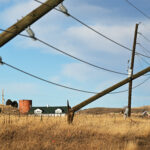A $2 billion radio network intended to connect emergency responders throughout New York failed its first major test, a newspaper reported Tuesday.
Buffalo chose to opt out of the system following what officials said were problems so severe that radios did not work in about half of the state’s second largest city, the New York Times reported.
“West of the center of the city we had zero reception,” said Buffalo Fire Commissioner Michel Lombardo. In the areas that did receive reception, he said, “it sounded like a guy was talking in a tin can.”
The city now intends to upgrade its own radio system, Lombardo said.
M/A-Com, a division of Tyco International, was awarded the contract to build an improved network of wireless transmission towers to allow the state’s police, fire and emergency personnel to communicate.
Under the current system, a good portion of the state is unreachable, and fire and police cannot communicate with each other. Upgrades to the antiquated communication system were in the works in the 1990s but were accelerated after the Sept. 11 attacks, the Times reported.
Buffalo and surrounding Erie County were expected to have the system in operation last June. The system is now expected to be functioning in Erie and Chatauqua counties by the end of the first quarter of 2008, said Victoria Dillon, a company spokeswoman.
“If those glitches are still present when the system is presented to the state for acceptance and then payment, that will be a very large concern,” said Michael A. L. Balboni, the deputy secretary for public safety, the governor’s top homeland security aide.
Michael R. Summers, president of the union representing sheriff’s deputies in Erie County, was also critical of the new system.
“There were spots where we could not communicate with each other,” he said. “We would move 10 feet up the road, and it would work.”
M/A-Com officials said they were working to address the issues
and said problems in Buffalo were caused by interference.
The state official overseeing the project for the Office of Technology, Michael R. Mittleman, said that his agency believes the problems will be resolved.
The network is scheduled to be statewide in 2010.
___
Information from: The New York Times
Was this article valuable?
Here are more articles you may enjoy.

 NYT Asks Judge to Dismiss Trump’s ‘Implausible’ Defamation Suit
NYT Asks Judge to Dismiss Trump’s ‘Implausible’ Defamation Suit  Twice Injured Firefighter Loses Second Workers’ Compensation Claim
Twice Injured Firefighter Loses Second Workers’ Compensation Claim  Wells Fargo Sued by Ex-Manager Who Said Bank Faked Diversity
Wells Fargo Sued by Ex-Manager Who Said Bank Faked Diversity  Rare Weather Warning Issued as Strong Gusts Fuel Colorado Wildfire Threats
Rare Weather Warning Issued as Strong Gusts Fuel Colorado Wildfire Threats 